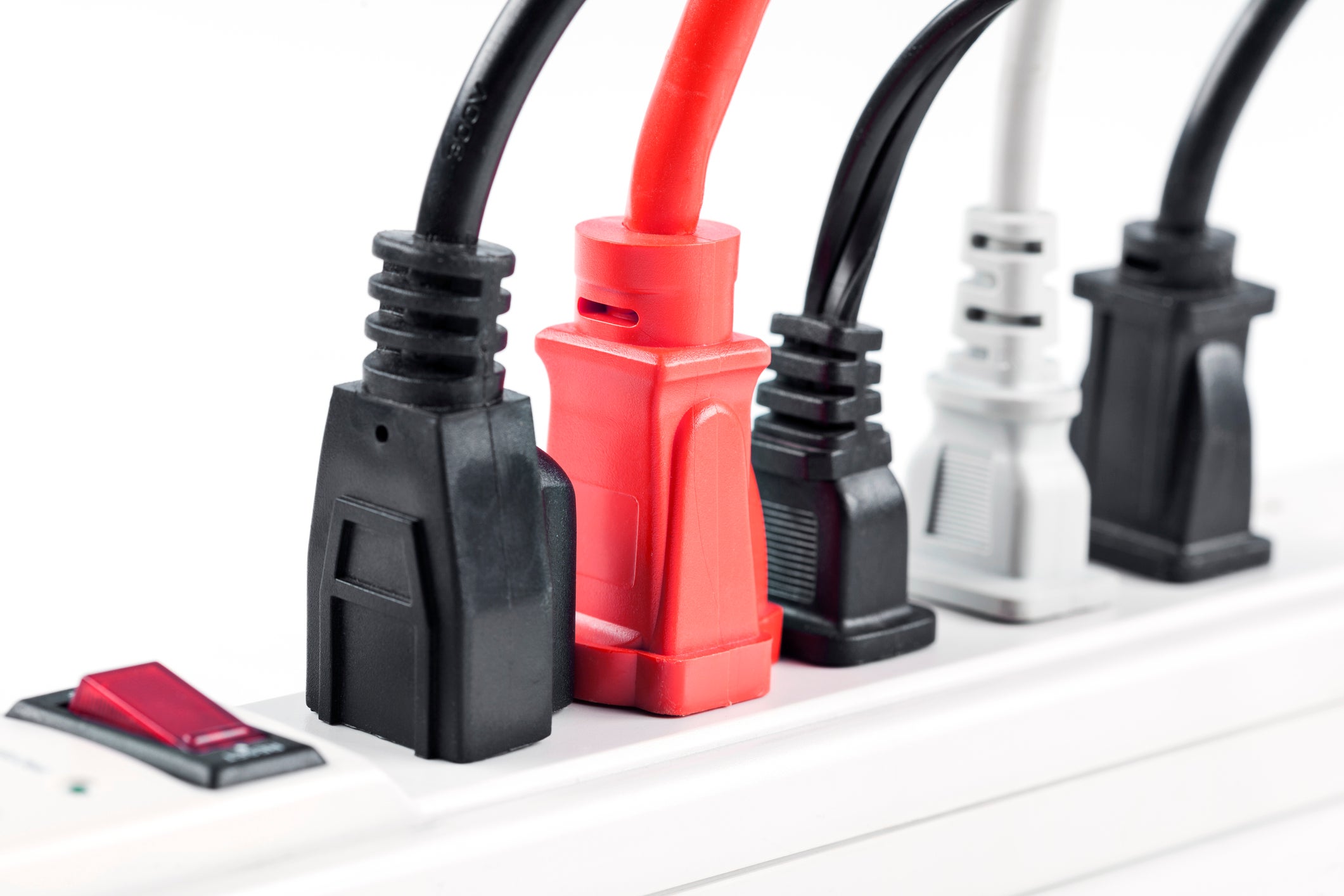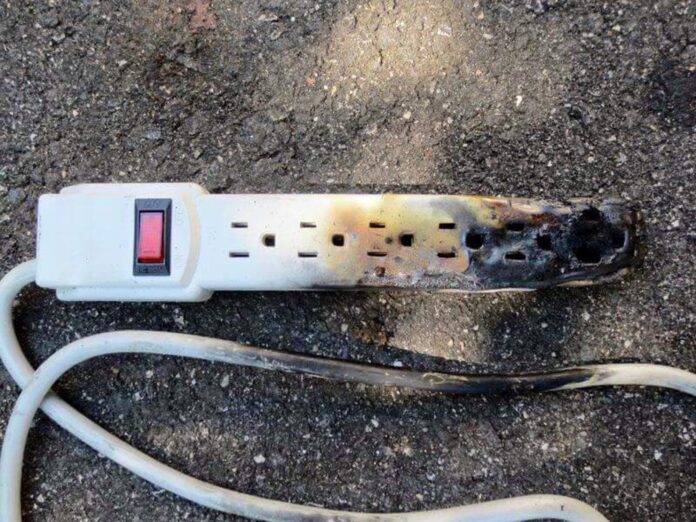Plugging a surge protector into another surge protector is not recommended and potentially dangerous. This practice, known as “daisy chaining,” can cause electrical hazards.
Ensuring the safety and efficiency of electronic devices in your home or office involves understanding the proper use of surge protectors. While these devices offer valuable protection against voltage spikes, their misuse can negate their benefits. Using surge protectors properly means recognizing the limits of their capability and the electrical systems in your space.
Safety guidelines consistently advise against the cascading of surge protectors, as it can lead to overloading and risk of fire. This article seeks to provide clear insights into the management of surge protectors, ensuring that your devices remain safeguarded while maintaining a secure electrical setup. Remember, the key to electrical safety lies in informed and cautious power management.
Daisy-chaining Surge Protectors
Think about surge protectors like a group of bodyguards for your electronics. But what happens when you connect these bodyguards together? This idea is daisy-chaining surge protectors.
The Concept Of Daisy-chaining
Picture a line of surge protectors, each plugged into the next. This is daisy-chaining. It might seem smart, but it’s risky. Why? Because surge protectors are made to work alone, not in teams.
Electrical Load Implications
Daisy-chaining can overload a single surge protector. It’s like asking one bodyguard to protect a crowd. The risk? A surge protector can fail, and your devices might get hurt. Here’s what overload can do:
- Heat up wires
- Lead to power loss
- Create a fire hazard
Stay safe. Use one surge protector per outlet. Protect your devices the right way.

Credit: www.komando.com
Understanding Surge Protectors
Think of a surge protector like a bouncer for your electronics. It stands guard, ready to shut down any unwanted power spikes. These spikes can damage your devices, or worse, kill them. Surge protectors keep your gadgets safe and sound from these unexpected jolts of electricity.
How Surge Protectors Work
Surge protectors act like gatekeepers. When power levels are safe, they let it through. But, if voltage jumps, they quickly block or redirect it. This action saves your electronics from harm.
- The protector senses excess voltage.
- It diverts the harmful power away from devices.
- Your gadgets keep working without a glitch.
Surge Protector Vs. Power Strip
Not all strips with plugs give surge protection. Power strips are like multi-sockets. They just let you plug in more items.
Surge protectors, however, offer more. They have special components inside. These parts shield your electronics from power spikes.
| Feature | Power Strip | Surge Protector |
|---|---|---|
| Extra Outlets | Yes | Yes |
| Protection from Spikes | No | Yes |
| Cost | Less | More |
Choose wisely. Know the difference. Keep your devices running smoothly and safely.
Safety Risks Of Improper Use
Plugging a surge protector into another surge protector is risky. People call this daisy-chaining. It’s not safe and can cause accidents. We’ll explore why this practice is dangerous. We care about keeping your home and devices safe. Let’s dive into the potential safety risks of connecting surge protectors together.
Potential Fire Hazards
When surge protectors are plugged into each other, they can overheat. Overheating might start fires. Here’s why it’s risky:
- Too much current can flow through one outlet.
- Connected surge protectors may exceed their capacity.
- Outlets are not designed for multiple surge protectors.
This is a fire risk. Always plug surge protectors directly into wall outlets. Keep your family and home safe.
Warranty And Insurance Considerations
Daisy-chaining surge protectors can void warranties. It may also affect insurance claims. Here’s what happens when you misuse surge protectors:
| Warranty Status | Insurance Impact |
|---|---|
| Manufacturers might not cover connected protectors. | Insurance might not pay for surge damage. |
Check your surge protector’s manual. Read the safety warnings. Make smart choices to ensure coverage.
Best Practices For Surge Protector Use
Using surge protectors helps keep electronic devices safe from sudden spikes in electricity.
Safety comes first; proper use and knowledge are key.
Proper Surge Protector Placement
Where you place your surge protector matters.
- Avoid covering surge protectors with rugs or furniture.
- Ensure they’re in an open area to prevent overheating.
- Keep them away from high-traffic areas to avoid damage.
- Do not expose them to moisture or direct sunlight.
Always plug surge protectors directly into a wall outlet for best performance.
Never plug a surge protector into another. This can lead to the risk of fire or electrical failure.
Regular Maintenance And Inspection
Surge protectors need check-ups too.
- Look for burn marks, cracks, or melted plastic.
- Test outlets periodically to ensure they function properly.
- Replace surge protectors every few years or after major electrical events.
- Do not ignore the warning signs of wear and tear.
Check indicator lights, if available, to monitor protector status.
Stay safe by staying alert.
Alternatives To Daisy-chaining
The need for multiple devices in a single space often leads to the risky practice of daisy-chaining surge protectors, which can compromise safety and device security. Understanding alternatives to daisy-chaining ensures not only protection but also peace of mind. Let’s explore safer methods to power all your gadgets.
Using A Single, High-capacity Surge Protector
Choosing a single surge protector with enough ports for all devices is smart. High-capacity surge protectors come with multiple outlets, making them ideal for heavy-use scenarios. This eliminates the need for multiple surge protectors. Key features include:
- High joule rating: Ensures maximum protection against surges.
- Wide spacing: Accommodates large plugs without blocking adjacent outlets.
- USB ports: Charge devices without needing a wall charger.
Select a surge protector with these features to power all devices safely.
Installing Additional Outlets
Professional installation of more outlets is often the safest alternative. It provides a permanent solution for areas with high power demand. One can expect the following benefits:
| Benefit | Description |
|---|---|
| Increased Safety | Dedicated outlets reduce overload risks. |
| Cleaner Space | Fewer cords lead to tidy areas. |
| Enhanced Capacity | New outlets can handle more current. |
Qualified electricians can assess and install outlets where needed. This ensures compliance with building codes and personal safety standards.

Credit: www.bobvila.com

Credit: www.techhive.com
Frequently Asked Questions Of Can You Plug A Surge Protector Into A Surge Protector
Can You Plug 2 Surge Protectors Together?
It is not recommended to plug two surge protectors together, as it can create a safety hazard and may violate electrical codes.
Is It A Bad Idea To Plug A Surge Protector Into A Surge Protector?
Plugging a surge protector into another is not recommended. This practice, called daisy-chaining, can reduce protection effectiveness and create a fire hazard. Always connect surge protectors directly to the wall outlet.
Is It Safe To Plug One Power Strip Into Another?
Plugging one power strip into another, known as daisy chaining, is unsafe and not recommended as it can overload the circuit and cause a fire hazard. Always connect power strips directly to a wall outlet for safety.
Is It Ok To Daisy Chain Surge Protectors?
Daisy-chaining surge protectors is not recommended as it can overload circuits and potentially cause electrical fires, voiding safety certifications.
Conclusion
Stacking surge protectors is not recommended. Doubling up creates risks and violates safety guidelines. Protect your electronics with a single, high-quality surge protector. Consult an electrician for multiple devices. Safety takes precedence over convenience in electrical matters.





